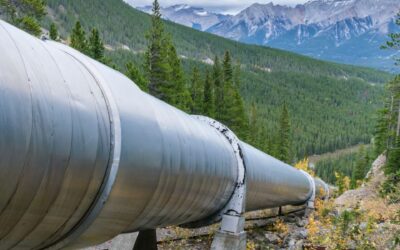14 April 2023, OTTAWA—The federal government’s latest National Inventory Report (NIR) confirms Canada is making important progress in reducing greenhouse gas emissions. The 2021 official emissions data also shows improvements separating emissions from economic growth, a critical marker on the road to meeting the country’s 2030 climate targets and building a cleaner economy.
According to the 2021 inventory data, Canada’s emissions declined 8.4 per cent below 2005 levels—reaching 670 million tonnes of carbon dioxide-equivalent (Mt CO2e) that year. Canada has committed to reduce emissions by 40 to 45 per cent below 2005 levels by 2030.
While Canada’s 2021 emissions rose 1.8 per cent above 2020 levels, that increase was substantially smaller than the rebound in economic growth that year (+4.6%), in the wake of the COVID-19 pandemic. This trend shows Canada continues to ‘decouple’ emissions from economic activity—even though many of the federal policies that will drive substantial emissions reductions in the future are only just coming into effect.
Economic sectors that saw the greatest progress in 2021 included buildings (2.2 per cent reduction from 2020), electricity (3.7 per cent reduction from 2020) and agriculture (1.4 per cent reduction from 2020). In contrast, emissions from transportation were up 4.9 per cent or 7 Mt CO2e while heavy industry emissions increased 4.1 per cent or 3 Mt CO2e. Oil and gas jumped 3.3 per cent from the previous year, to 189 Mt CO2e. This is 12.5 per cent higher than 2005 levels, representing a significant ongoing challenge for industry and policy makers.
While promising, the emissions trends for 2021 need to accelerate for Canada to achieve its 2030 target. Previous Climate Institute analysis concluded that quick and effective implementation of the federal government’s Emissions Reduction Plan, alongside greater provincial and territorial action, will be instrumental to driving progress at the scale and pace required this decade.
The government’s official 2021 inventory is consistent with the overall trends estimated by the Institute earlier this year, showing even better progress than anticipated even after accounting for methodological changes implemented by the government. The federal government recalibrates the methodologies on which the NIR is based every year to align with improvements in international emissions accounting standards, new information, and evolving science. All emissions years in the inventory (1990-2021) are adjusted when methodologies are updated.
The NIR is published each spring following a 16-month lag, which makes it difficult to quickly track progress and course correct if data shows Canada is not on the path to reaching its targets. To provide more timely information for decision-makers, the Canadian Climate Institute will release an independent early estimate of national emissions every fall–eight months ahead of the official inventory report. Our estimate of 2022 national emissions will be released in September 2023.
QUOTES
“These latest emissions numbers are significant and welcome news: they show that Canada is starting to put the brakes on emissions, while the economy grows. Cutting emissions by over 8.4 percent since 2005 is a big deal, and our independent estimates confirm this promising trend. As long as Canada picks up the pace with stronger policy, there’s still time to reach Canada’s 2030 emissions reduction goal, while building a cleaner, more competitive economy and keeping life affordable.”
Rick Smith, President, Canadian Climate Institute
“While Canada’s economy saw a strong rebound in 2021, greenhouse gas emissions grew slower than expected, thanks to policies to improve energy efficiency and decarbonize the economy, as well as market drivers. Although some sectors are making clear progress, oil and gas emissions are trending in the wrong direction. Achieving Canada’s 2030 climate target will require faster action and stronger policy from governments across the country—but the progress we see today is a step forward.”
Dave Sawyer, Principal Economist, Canadian Climate Institute
CONTACT
Catharine Tunnacliffe
Director of Communications
ctunnacliffe@climateinstitute.ca
(226) 212-9883
RESOURCES
2021 Early estimate of National Emissions (February 2023)
Insight: Early estimate of National Emissions shows promising trends for 2021
Independent assessment: 2030 Emissions Reduction Plan (April 2022)





